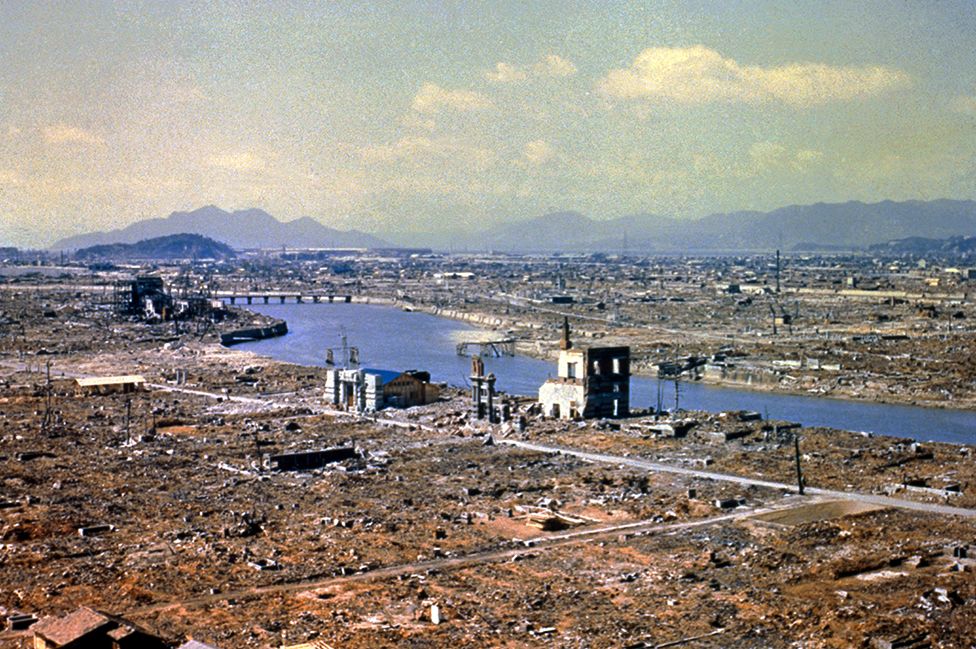Commemorating 80 years since the atomic bombings through a lens of sound, sorrow, and survival.
On August 6 and 9, 1945, two blinding flashes reshaped the world. In an instant, Hiroshima and Nagasaki were reduced to ash by the first and only use of atomic weapons in war. As the mushroom clouds rose, so did questions—about humanity, morality, and the future. Eighty years later, the legacy of those devastating days continues to reverberate—not only through history books, memorials, and diplomacy—but through music.
This autumn, the renowned Italian chamber ensemble I Musici will return to Japan with a tour marking the 80th anniversary of the atomic bombings. At the heart of their program is a new composition titled The Two Flowers by Italian composer Antonio Marcotullio, the winning work of the ensemble’s International Call for Scores 2025. The piece, a four-part meditation on destruction and rebirth, will be premiered alongside Vivaldi’s The Four Seasons—a work inseparably linked with I Musici since the 1950s.
But this will not be a routine performance. As I Musici invites audiences to experience The Four Seasons “filled with prayer,” their interpretation becomes more than just a baroque classic; it becomes a vessel for reflection, mourning, and resilience.
The Two Flowers: Music Born of Memory
Marcotullio’s composition takes listeners on a chronological journey. The first movement opens with a serene portrayal of life before the bomb—quiet mornings in Hiroshima and Nagasaki, lives unknowingly on the brink. The second movement escalates to the moment of impact, evoking the chaos of detonation through spiralling counterpoint and mounting tension.
The third movement delivers a dirge-like lament, with instruments weaving a dialogue of loss. And then comes the final movement: rebirth. Drawing inspiration from the resilience of the Japanese people, it symbolises regeneration—two cities rising from the ashes, much like flowers blooming from scattered seeds.
The work ends where it began, returning to the gentle sounds of the opening morning—echoing not naïveté, but healing, and the hope that remembrance might guide future generations toward peace.
A Legacy of Musical Witness
While The Two Flowers is a new addition to the canon, it joins a lineage of deeply evocative compositions confronting the atomic age.
One of the most harrowing is Krzysztof Penderecki’s Threnody to the Victims of Hiroshima, written in 1961 for 52 string instruments. Initially titled 8’37”, the piece was an experiment in sound mass and sonoristic technique. But upon hearing it performed, Penderecki dedicated it to the victims of Hiroshima. The shrieking strings, glissandi, and dissonant clusters capture the terror and trauma of nuclear warfare in raw, visceral sound. The music doesn’t narrate—it screams.
Another monumental work is Masao Ohki’s Symphony No. 5 “Hiroshima”, composed in 1953. Deeply influenced by socialist ideals and the haunting Hiroshima Panels by artists Iri and Toshi Maruki, Ohki crafted an eight-movement symphonic fantasy that mirrored the bomb’s timeline—from countdown to catastrophe to aftermath. His movements bear titles like Ghosts, Fire, and Atomic Desert, each depicting stages of the devastation with cinematic clarity. Unlike Vivaldi’s pastoral charm, Ohki’s sound world is claustrophobic, grim, and unflinchingly honest.
Music Under Occupation: Silence, Suppression, and Survival
The power of these works lies not just in their artistry, but in their defiance. From 1945 to 1952, during the American occupation of Japan, censorship laws prohibited open criticism of the bombings. Artistic expressions about Hiroshima and Nagasaki were muted, if not silenced entirely.
Only in the 1950s did Japanese composers begin to address the trauma openly. Since then, over 2,000 musical works have been created in response to the bombings—ranging from Western classical to Japanese traditional, from children’s choirs to avant-garde experiments. These compositions are as varied as the lives they commemorate: some mournful, some angry, some hopeful, all necessary.
A Season of Remembrance
This fall, I Musici’s return to Japan isn’t just another tour—it’s an act of musical remembrance. Performing in a country that welcomed them with open arms decades ago, the ensemble brings a program that honours not only the beauty of baroque music but the endurance of the human spirit.
In pairing The Four Seasons with The Two Flowers, they invite us to hear the passage of time—not just through weather or nature, but through history, trauma, and resilience.
As we mark 80 years since Hiroshima and Nagasaki, we are reminded that music does not forget. It does not justify. But it remembers. It resounds. And in that resonance, perhaps, lies a prayer for peace.
Eighty years have passed since the skies over Hiroshima and Nagasaki burned with unimaginable force—ushering in a nuclear age that forever altered the course of history. As we remember the hundreds of thousands who perished and the generations marked by trauma, we also bear witness to the resilience of those who rebuilt from the ashes. Through music—whether in the anguished strings of Penderecki, the searing realism of Ohki, or the meditative beauty of The Two Flowers—we find a language that mourns, remembers, and ultimately calls for peace. Let this anniversary not simply mark the passage of time, but renew our collective commitment to ensure that such devastation is never repeated. In every note, every silence, and every act of remembrance, may we echo a single, enduring hope: never again.
